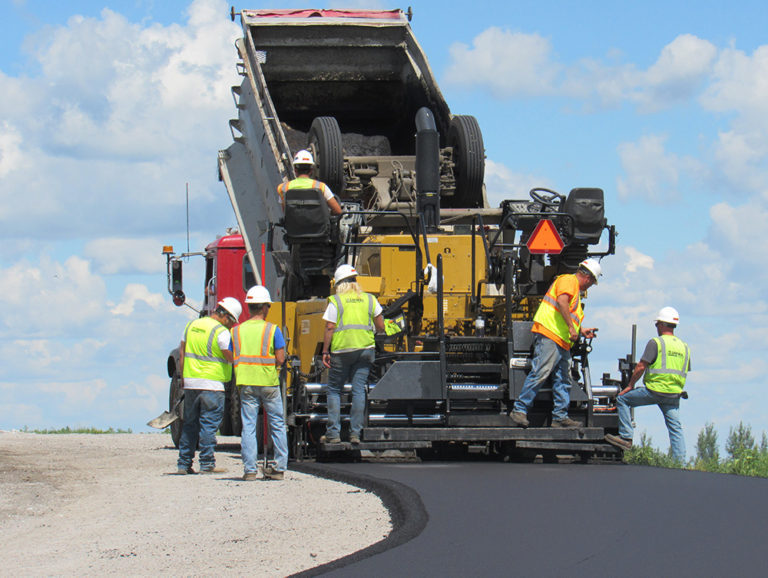As another year approaches, the construction industry will have to contend with a number of challenges, many of which have been building up over the course of years. At the forefront are structural shortages of trained construction workers, which are the product of Baby Boomer retirements, shifting technologies, a lack of labor-force growth and the general tendency of younger workers to enter the skilled trades in smaller and smaller numbers.
More than inflation, more than the supply chain, more than government policies and regulations—labor shortages will be the defining challenge of the construction economy for the foreseeable future. For that reason, it’s the sole focus of Construction Executive’s 2023 Construction Economic Forecast.
HOW WE GOT HERE
There are times when the shortage of construction workers temporarily abates, but these tend to be moments of economic distress. In April 2009, for example, amid a global financial crisis and the Great Recession, there were only 30,000 available, unfilled construction job openings in America, according to the U.S. Bureau of Labor Statistics’ (BLS) Job Openings and Labor Turnover Survey. That was down from 266,000 in January 2007, when the housing bubble of that era had just begun to burst.
More recently, by April 2019, less than a year before the pandemic would undo the economy, there were 416,000 available, unfilled construction jobs. By that point, the U.S. economy was humming. Unemployment was approaching a 50-year low, and contractors complained bitterly about worker shortages.
But then the pattern shifted again. Even before the pandemic, the number of available construction jobs was shrinking, in part because strong economic growth had produced higher interest rates. There was also growing concern regarding overbuilding in certain commercial real-estate segments, including office and hotel segments. By November 2019, the number of available, unfilled construction job openings had ratcheted back down to 241,000.
Predictably, when the pandemic shut down the U.S. economy in March 2020, the number of available job openings declined further. What was surprising was how quickly construction activity bounced back amid a global public-health crisis. In April 2020, there were 208,000 available construction jobs—precisely half the level of one year prior—but in many communities, construction was deemed to be an “essential” industry, which limited the damage to industry momentum. The Federal Reserve responded by dramatically lowering interest rates and expanding money supply, while the federal government initiated a massive stimulus plan.
With the U.S. economy flooded with cash, construction activity took off. By April 2022, there were 440,000 available, unfilled construction job openings in the United States. At this time, the industry was frustrated not by a lack of demand for their services but by an excess of unmet demand; many contractors indicated they were operating at capacity, with an elevated backlog.
Once again, demand for workers fluctuated. In March 2022, the Federal Reserve increased borrowing costs and did so again in May, June and July. With mortgage rates shooting higher, interest in homeownership waned. By the late summer, the U.S. homebuilding segment was widely viewed as being in recession. As of July 2022, the number of available construction jobs stood at 375,000, which was still higher than at any point prior to April 2019.
Contractors have responded to a dearth of available, sufficiently skilled construction workers in predictable ways. First, they have tended to hold onto workers even when they haven’t been fully occupied. Finding workers when one needs them is still incredibly challenging, and therefore, layoff activity remains modest. From 2000 to February 2021, the rate at which contractors laid off or discharged workers rarely dipped below the rate at which workers quit. In April 2021, however, 2.5% of construction workers quit, while just 1.9% were laid off or discharged. These rates were identical in July 2022, the last month for which data was available as of press time.
Second, contractors have rapidly expanded construction wages. According to the BLS, by early 2022, nonsupervisory construction positions were collectively experiencing their fastest rate of wage growth in 40 years. But contractors may need to pay even more given the workforce’s shifting demographics and economic realities. There was a time when construction workers could expect to make meaningfully more than they would in a variety of segments, such as retail and warehousing. But the recovery from the pandemic has been associated with massive consumer outlays, increasing demand for industries that directly or indirectly satisfy household demand. As companies like Walmart and Amazon have dramatically expanded entry-level compensation, construction’s compensation advantages have eroded.
While it’s true that entry-level construction jobs still pay more than entry-level jobs in many other industries, wage premiums may need to become even more significant than they are now. Remember, construction is often much more demanding than other work. Among the most dangerous professions in the United States based on the risk of fatality—as identified by Occupational Safety and Health Administration (OSHA)—are construction laborers (39.5 deaths per 100,000 workers), roofers (29.3), electricians (15.9), welders and cutters (12.0) and structural metal workers (64.4).
SUPPLY, DEMAND AND EMPLOYMENT
Throughout the pandemic period, industry employment has been shaped by both demand and supply. Between February 2020, the last month prior to widespread economic lockdowns, and August 2022, the last month for which data was available as of press time, residential building construction employment is up 7.7%. While the homebuilding segment is stumbling under the weight of higher mortgage rates and pervasive consumer pessimism, multifamily remains active thanks to apartment shortages in many communities, rapidly rising rents and the difficulties that many prospective would-be-first-time buyers encounter in looking for homes they want and can afford.
Employment in nonresidential construction has tended to expand more slowly, due largely to lagging demand for office space, new shopping centers and hotel rooms. Despite elevated demand for fulfillment and data centers, nonresidential employment is down 2.5 percent since February 2020.
BACK TO THE OFFICE
The one constant is change. In November 2021, President Joe Biden signed the $1.2-trillion Infrastructure Investment and Jobs Act. While much of this money has yet to impact the economy, there are indications that projects have begun to move forward. Over the past year, the heavy and civil engineering segment, which includes roadwork, has expanded by nearly 5%. As more state, regional and local transportation agencies move ahead with construction, employment in this segment is likely to expand in 2023 and beyond.
There’s more. A growing number of businesses are demanding that their workers return to the office. Early during the pandemic, there was evidence that productivity expanded as many people began working remotely. Unemployment was rising and most workers were seeking job security, so proving that you could be productive away from the office was of paramount import.
But as of July 2022, there were 11.2 million available, unfilled job openings across all industries—nearly two openings for every unemployed person. The need to prove oneself has become less pressing. Instead, a new phenomenon has emerged: “quiet quitting.” This occurs when someone does just enough work to retain their position, but no more. According to a recent Gallup survey, nearly half of America’s workforce meets the definition of quiet quitting. Not coincidentally, worker productivity has been declining in 2022.
Regardless, the return of more workers to the office has reinvigorated office leasing. According to Colliers, office-leasing activity in Manhattan was stronger in July 2022 than in any month since January 2020. While it’s true that leasing activity was still nearly 12% below its 2019 pre-pandemic average, it appears that workers are finally coming back to the office.
THE IMMIGRATION QUESTION
The solution to construction’s labor-market woes may rest with legal immigration policy. Gallup has tracked public opinion regarding the topic for the last 60 years. Between 1965 and 1995, the percentage of respondents who felt the number of immigrants in the United States should increase was approximately 7%. Then came a massive tech boom associated with a lack of workers in information technology; the federal government responded by ramping up legal immigration, reflecting shifting attitudes toward immigration and workforce development.
After two decades of more favorable attitudes, by mid-2020, support for faster immigration peaked at 34%. That may have been in part a reaction to anti-immigrant rhetoric emerging from Washington, D.C.; however, by July 2022, the number of people favorably inclined toward faster immigration had dipped to 27%, while the number that think it should decline has increased from 28% in 2020 to 38% in the most recent poll.
Sentiment aside, the chart on p. 24 reflects what has actually transpired. By earlier this year, there were 1.7 million fewer foreign-born people of likely working age than there would have been if pre-existing trends had persisted from 2019 onward. That’s particularly a problem for an industry that has become so heavily dependent on immigrants. By 2018, the share of non-native construction workers stood at 42% in California, 41% in Texas, 37% in New York and 35% in Florida. The trades associated with a greater share of immigrant workers were plasterers and stucco masons (54%); drywall installers, ceiling tile installers and tapers (49%); painters and paperhangers (48%); carpet, floor and tile installers and finishers (46%); roofers (45%); and brick masons, block masons, stonemasons and reinforcing iron and rebar workers (39%).
There is another factor that is less political and more demographic to explain the labor shortage: The ongoing aging of Baby Boomers has produced outsized rates of retirement. This has been especially problematic for contractors because the average age of construction workers—including skilled workers—is quite high. According to Build Your Future, approximately 3 of 10 construction workers will retire by 2026. By the beginning of the next decade, more than 40% of current workers will have disappeared from the industry.
LOOKING AHEAD
To date, many contractors report that they have been able to pass their rising human capital, equipment and materials costs along to project owners. As a result, they have experienced rising margins and, based on past experience, expect to be able to expand margins or hold them constant over the months to come.
That may not continue throughout 2023. With borrowing costs rising in the context of tightening monetary policy, contractors may observe shrinking demand for their services, at least among private project owners. That may create a circumstance in which construction delivery costs are still rising while contractors experience diminished pricing power, especially if the economy heads into recession in 2023.






